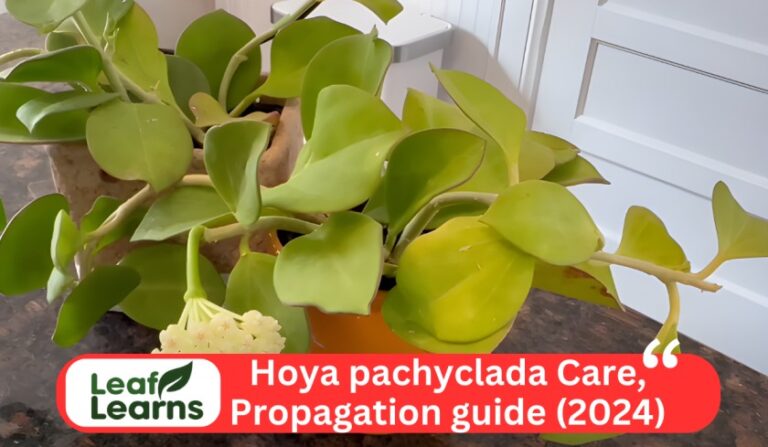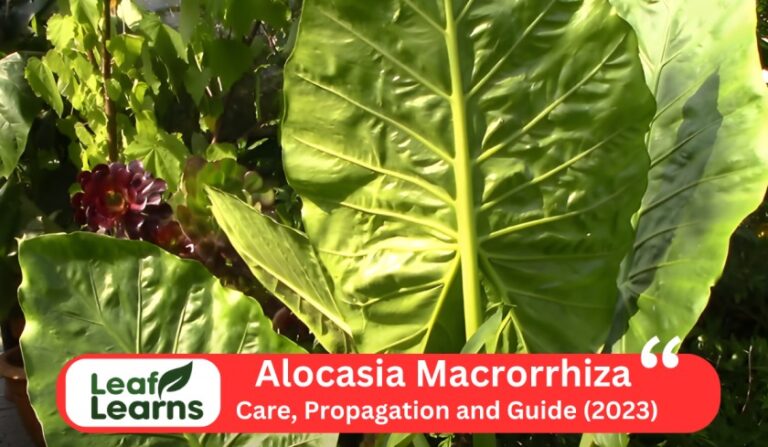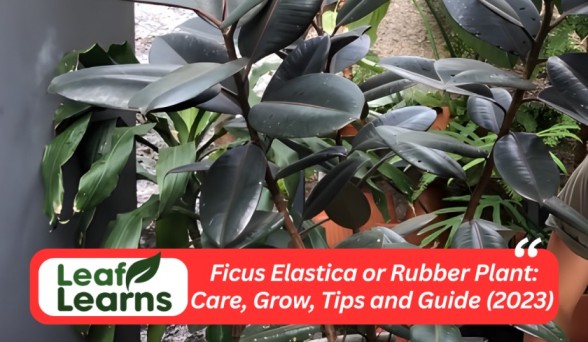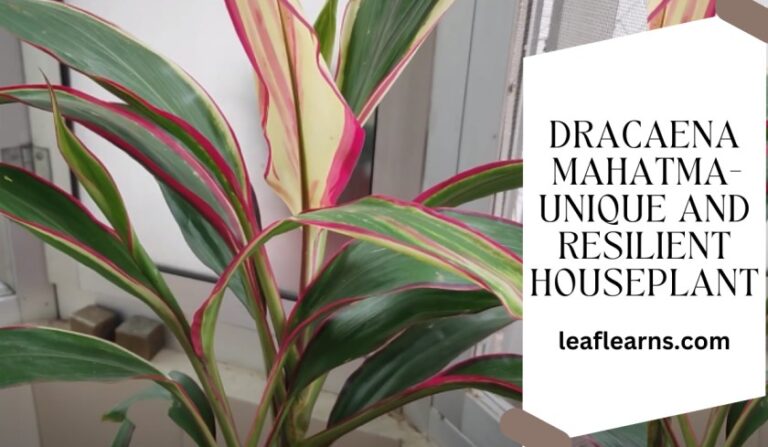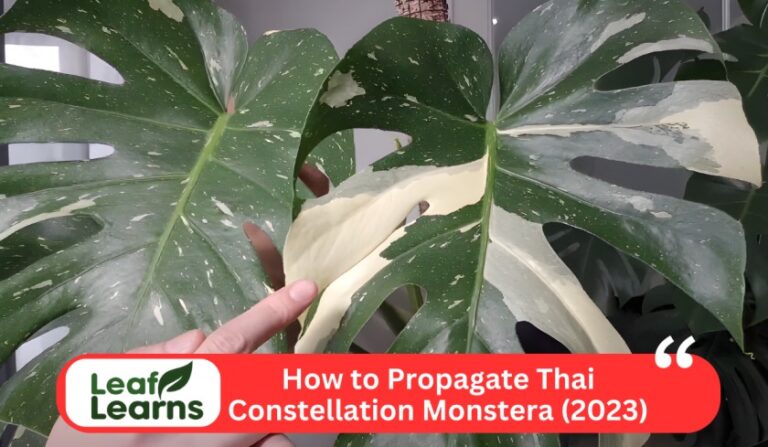Thimble Cactus | Mammillaria gracilis: Propagation and Varieties
The lovely and little succulent known as the Thimble Cactus, or Mammillaria gracilis, is native to Mexico. It gets its name from the small thimble-like, cylindrical stems that can grow in bunches, producing an eye-catching arrangement. Plant lovers praise this hardy cactus for its low care needs and capacity to flourish in dry environments.
It occasionally produces beautiful, funnel-shaped blooms in colours of white or pink during the spring and summer. Its brilliant green stems are decorated with tiny, harmless spines. The Thimble Cactus is an adorable addition to any collection of succulents.
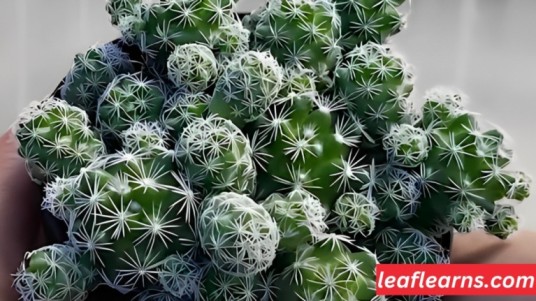
It is a reasonably low-maintenance plant that is perfect for both novice and experienced gardeners alike. indoor and outdoor settings, adding a dash of whimsy and natural beauty.
You can expect to see tiny cream-colored flowers adorning this adorable cactus in cooler months. Despite its intimidating scientific name, Mammillaria gracilis is beloved among collectors and gardeners for its visually appealing appearance and hardy nature.
This cactus goes by various charming common names, such as thimble cactus, powder puff cactus, or powder puff pincushion, reflecting its easy-going personality.
| Common Name | Thimble Cactus |
| Scientific name | Mammillaria gracilis |
| Family | Cactaceae |
| Origin | Mexico, parts of the southwestern United States |
| Growth rate | Grow up to 12 inches |
| Leave colour | Bright green |
| Flower | Delicate white and creamy yellow flowers |
| Uses | Ornamental plant for indoor or outdoor gardens |
| Propagations | Spores, Division |
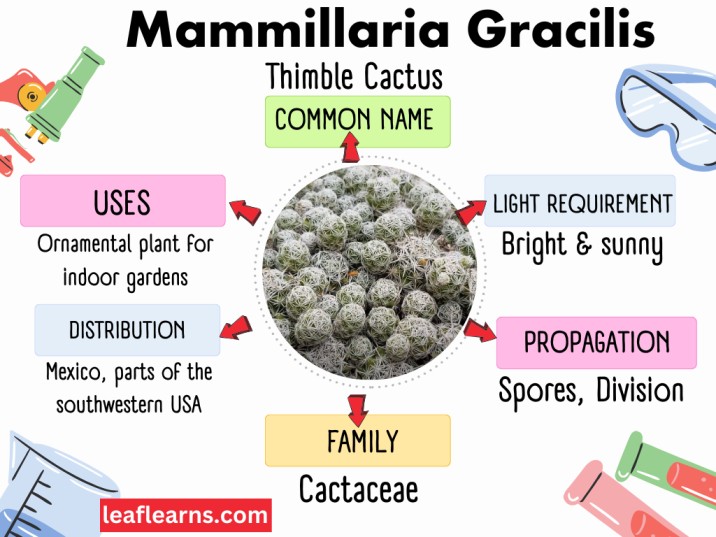
Contents
- 1 Propagating Thimble Cactus/Mammillaria gracilis
- 2 Step-by-step propagation guide
- 3 Thimble Cactus Lifespan
- 4 Factors affecting longevity
- 5 Signs of an aging thimble cactus
- 6 Thimble Cactus Scientific Name
- 7 Varieties and hybrids
- 8 Thimble Cactus Flower
- 9 Thimble Cactus Stretching
- 10 Thimble Cactus Bloom
- 11 Thimble Cactus Fruit
- 12 Thimble Cactus Size
- 13 Thimble Cactus Pot Size
- 14 Signs of overwatering and underwatering
- 15 Other Varieties and Colors
- 16 Common Uses
- 17 Thimble Cactus Care: Nurturing Your Delicate Desert Beauty
- 18 Mastering the Art of Thimble Cactus Propagation and Maintenance
- 19 Conclusion
- 20 FAQs
Propagating Thimble Cactus/Mammillaria gracilis
Methods of propagation
Seeds
The technique for growing the Thimble Cactus, from seeds is simple. Start by gathering mature seeds from ripe fruits of a healthy plant. Create a shallow seed tray or pot with a well-draining cactus mix, and lightly wet it. Spread the gathered seeds evenly over the top of the soil mixture, being careful to keep them from going too deep.
To aid in moisture retention and stability, sprinkle a small coating of fine-grained sand over the seeds. Place the tray or pot in a warm, well-lit area that is kept at a constant 70 to 80 degrees Fahrenheit (21-27 degrees Celsius).
Keep the soil barely damp but not soggy. When the seedlings are big enough to handle after germination, which usually takes a few weeks to a few months, they may be placed into individual pots with regular cactus care to promote their healthy growth.
Offsets or pups
Thimble cactus, can be reproduced by offsets or pups by gently severing the young, branch cacti from the parent plant. Wait until the offsets are big enough to handle typically 1/3 to 1/2 the size of the parent plant before doing this.
To carefully separate the puppies, use a clean, sharp knife or pair of scissors. Don’t forget to save some of the root system.
To lessen the chance of rotting, let the cut surfaces a day or two to dry and calluse. After that, plant the offsets in a cactus mix that drains well, being sure to cover the roots but leave the tops slightly exposed. Water lightly at first, then more frequently as they become established in their new pots.
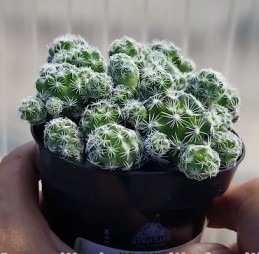
Step-by-step propagation guide
Here is the guide for propagations step by step
Materials Needed:
Healthy mature Thimble Cactus (source plant)
Sterilized sharp knife or scissors
A small pot or container with well-draining cactus soil
Optional: rooting hormone (for faster root development)
Propagation Steps
Choose a Mature, Healthy Source Plant: Pick a mature, healthy, few-year-old Thimble Cactus. Make sure it is clear of illnesses and pests.
Get the Container Ready: Pick a little pot or container that has plenty of drainage holes. Put some well-draining cactus potting soil inside. To enhance drainage, you can also add some perlite or sand.
Determine Offsets and Remove Them: Look for little pups or offsets sprouting at the source plant’s base. These are the fresh growths that can be divided for further development.
Sterilise cutting equipment: To avoid infections in the cuts, ensure sure your knife or scissors are clean and sterilised before you start. They may be made sterile by heating the blade or using rubbing alcohol.
Cut or gently separate the offset from the source plant to separate it. Make sure the offset is not harmed during the separation.Callus the Cutting: To allow the sliced surface to callus, leave the separated offset in a dry, shady area for a few days. In planting, this helps avoid rot.
Plant the Offset: Plant the offset in the ready-made container with cactus soil once it has callused. Before planting, you can dip the cut end in rooting hormone to hasten the formation of the roots.
Use water wisely: To help the soil settle after being freshly planted, water the offset moderately; do not overwater. Because Thimble Cacti are prone to root rot, it’s important to avoid keeping the soil too wet.
Place the pot in an area with bright, indirect sunshine to provide enough lighting. Avoid direct sunlight since it might burn the cutting, especially at the warmest times of the day.
Watch and Take Care: Keep an eye on the offset and be sure to water the soil only when it is completely dry. It ought to begin to form roots and sprout over time. This may need a few weeks to several months.
After Establishment, Transplant: You can either leave the offset in the same pot if it has enough room to grow or transplant it into a larger pot once it has grown and developed roots.
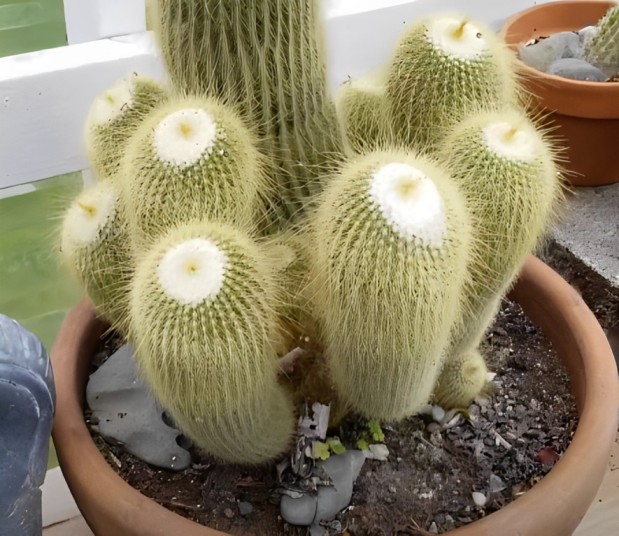
Thimble Cactus Lifespan
Average lifespan
Mammillaria-gracilis, often known as the thin cactus, has a variable lifetime that is influenced by its growth environment and maintenance. In general, these cacti may survive for several decades with adequate care; some can even live for 20 to 30 years or longer.
However, their longevity might be considerably reduced if they don’t receive the proper care and attention. To maximise their lifetime, the proper atmosphere and care must be given.
Factors affecting longevity
It can live for many years depending on a number of variables. First, the care it receives, such as regular watering, suitable sunshine exposure, and well-draining soil, affects its general health and resiliency.
Extreme temperatures, changes in humidity, and frost can all have an affect on an organism’s ability to survive, hence environmental factors are very important.
Additionally, safeguarding it from illnesses and pests is essential for its long-term health. Last but not least, careful cultivation and avoiding too aggressive trimming or propagation attempts will greatly lengthen the lifespan of this sensitive cactus species.
Signs of an aging thimble cactus
A Thimble Cactus may show a number of symptoms as it ages. A progressive decline in growth rate, which results in smaller new segments or offsets, is one obvious sign. As the cactus ages, the core stem thickens and becomes more durable, giving the plant a woody or corky look.
Additionally, as part of the natural ageing process, older specimens may show browning or discoloration of the lower segments. It is crucial for carers to modify their care regimens in accordance with the Thimble Cactus’s changing demands since these signals collectively signify the passage of time and the natural evolution of the cactus’ life cycle.
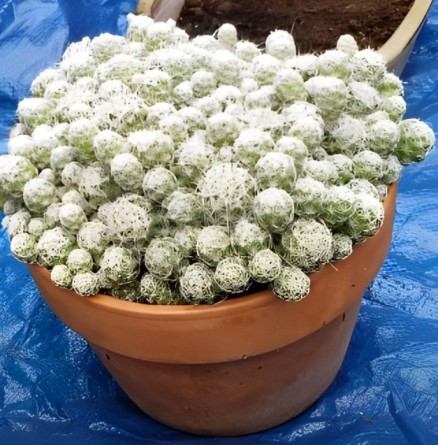
Thimble Cactus Scientific Name
Taxonomical classification
Mammillaria-gracilis, the scientific name of the Thimble Cactus, is a member of the Magnoliophyta (angiosperms), Magnoliopsida (dicotyledons), Caryophyllales (caryophyllids), Cactaceae (cactus family), and Mammillaria genus.
Common species names
It is frequently known to as the “Thimble Cactus” because of its diminutive, cylinder form that resembles a thimble. Because of its thin, finger-like stems, it is also known as the “Feather Cactus” or “Ladyfinger Cactus.”
Varieties and hybrids
Breeders and gardeners have created several Mammillaria types and hybrids over time. The following are some noteworthy varieties and hybrids:
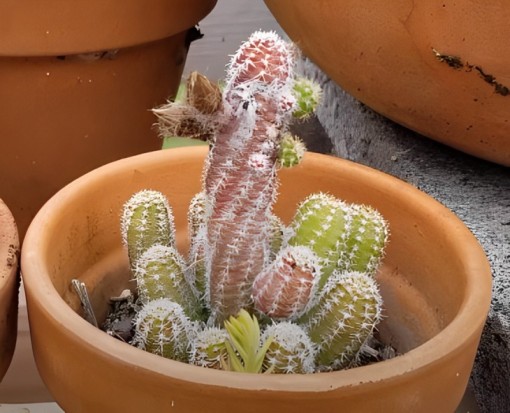
Mammillaria gracilis var. fragilis: This variant is distinguished by its modest size and delicate, fine spines. It is one of Thimble Cactus’ most prevalent varieties.
Mammillaria gracilis var. fragilis ‘Arizona Snowcap’: This variant has white spines that give it the appearance of being topped with snow. Its distinctive looks make it a popular option.
Mammillaria gracilis var. fragilis ‘Arizona Sunburst’: This variation is distinguished by its vivid yellow spines, which stand out sharply against the cactus’s green body.
Mammillaria gracilis ‘Prolifera’ is a cultivar that has a reputation for producing offsets, sometimes known as “pups,” in large quantities. It produces little cactus clusters, which makes it an attractive option visually.
Mammillaria gracilis ‘Bicolor’: This hybrid cultivar has green and pinkish-red colours mixed together. It is an eye-catching cactus that gives your collection a dash of colour.
Mammillaria gracilis cv. Arizona Snowcap ‘Sprocket’: This unusual cultivar combines the characteristics of ‘Arizona Snowcap’ with an eye-catching spiral or sprocket-like growth pattern.
Arizona Snowcap ‘Cotton Ball’ Mammillaria gracilis cv.: As its name implies, this species has spines that resemble cotton balls or puffs, giving it a soft and fluffy look.
Arizona Snowcap ‘Golden Stars’ Mammillaria-gracilis cultivar features golden-yellow spines that contrast nicely with the cactus’s green body.
Mammillaria-gracilis cv. Fragilis ‘Rubra’: This variation is distinguished by its red spines, which give your collection of cacti a striking and vibrant touch.
Mammillaria-gracilis cv. Fragilis ‘Arizona Brown Spines’: This variation contains brown spines instead of the usual white or yellow ones, giving it a distinctive appearance.
Thimble Cactus Flower
In the realm of cactus, the Thimble Cactus has beautiful blossoms. These little cactus, which seldom grow taller than a few inches, have beautiful blooms that are frequently pink, though they can also be white or light purple. These blooms, which arise from the cactus’ crown, are quite modest in size and have delicate, tubular petals.
Although the precise period might change depending on the habitat and care, thimble cactus normally bloom in the spring and early summer. It’s crucial to give these cacti lots of bright, indirect sunshine, well-draining soil, and a regular watering schedule in order to promote good blooming.
It’s important to avoid overwatering throughout the flowering season because doing so might cause root rot and harm the delicate blossoms. The Thimble Cactus may be made to delight your collection with its lovely petals by carefully balancing care elements.
Thimble Cactus Stretching
Stretching is frequently brought on by a lack of sunlight in thin cacti. These cacti have a tendency to extend when they don’t get enough light to maintain their development. When they are cultivated inside or in low-light conditions, this occurrence is very prevalent.
It’s important to give enough sunshine to prevent and treat stretching. Put them in a spot where they get at least 6 to 8 hours of direct, strong sunshine every day.
If stretching has already taken place, the cactus must be allowed to reshoot and recover its compact, thimble-like shape by trimming or beheading the lengthened stems.
Additionally, to prevent shock when relocating the cactus to a sunny place and to preserve its natural, compact growth habit shape, gradually acclimatise it to increasing light.
Thimble Cactus Bloom
Cactus lovers look forward to and find intriguing the Thimble Cactus’s blooming phase. Typically, this cactus species produces tiny, delicate blooms that appear from the plant’s head and are coloured pink or white.
Individual blooms may endure for a few days to a week throughout the blooming season, which frequently takes place in late spring to early summer.
Thimble Cactus blooms in response to a variety of circumstances, with sunshine playing a key role. Blooming must be triggered by receiving enough sunshine, ideally several hours of direct sunlight each day. In addition, changes in temperature, especially cooler nights in the spring, might encourage cacti to grow blooms.
Make sure the Thimble Cactus receives the proper amount of light and maintains a temperature difference between day and night, simulating its natural habitat, to promote blooming.
For general plant health and flowering potential, proper watering, letting the soil dry out between waterings, and providing well-draining soil are also essential.
Thimble Cactus Fruit
This plant has tiny, rounded fruits that turn a bright red colour when mature. These tiny fruits, which normally have diameters of barely one to two centimetres, are sometimes overlooked due to the cactus’s prickly appearance.
Despite their little size, they have a distinctive attractiveness because they resemble small crimson diamonds tucked between the cactus spines. Mammillaria-gracilis normally starts producing fruit in late spring or early summer, after the cactus has finished blooming.
Due to their size and the cactus’s spines, harvesting these fruits can be a delicate process that calls for cautious handling. They are a modest but interesting addition to the cactus’ overall attractiveness, albeit they do contain tiny, papery seeds and have a pleasantly sweet flavour with notes of acidity.
Thimble Cactus Size
These cacti often don’t grow much larger than their individual plants, which can reach heights of 3 to 6 inches (7.5 to 15 cm) and diameters of around 2 to 3 inches (5 to 7.5 cm) apiece.
However, their growth may be kept in check and maintained by careful pruning and removing offsets or pups that grow around the base of the primary plant on their own. Pruning enables collectors to grow compact clusters or single specimens, retaining their appealing thimble-like look and allowing them to be used in a variety of indoor and outdoor settings.
Thimble Cactus Pot Size
You must take into account a few rules while choosing the proper pot size for your Thimble Cactus. To ensure optimum root development, use a container that leaves around 1-2 inches (2.5–5 cm) of space around the cactus.
A container that is too big might retain too much moisture, potentially leading to root rot, while a pot that is too tiny will limit growth.
The cactus’s growth may also be considerably impacted by the size of the pot. The cactus may direct more of its energy towards root development and grow into a more compact, healthy plant in a somewhat tight planter.
On the other hand, an excessively big container would cause inconsistent watering, which would limit the cactus’ ability to thrive. Choosing a pot that is the right size is therefore crucial for general wellness.
Signs of overwatering and underwatering
This plant is a small, popular cactus species that requires specific care to thrive. Both overwatering and underwatering can have detrimental effects on this delicate plant.
Overwatering
Thimble Cactus a tiny, well-known species of cactus, needs particular care to survive. This sensitive plant can suffer from both overwatering and underwatering.
Overwatering: When taking care of Thimble Cacti, overwatering is a frequent error. The cactus may seem plump and bloated, with a soft and mushy feel, as a sign of overwatering. Additionally, the soil may become too wet or flooded.
Brown or black stains on the cactus’ body, which denote decay brought on by too much moisture, are another glaring indicator. Thimble cacti that receive too much water frequently lose their bright green colour and even take on a sickly, yellowish tint.
Furthermore, excessive watering might cause mould or fungal growth to appear on the soil’s surface. The cactus’s weak and perhaps rot-prone roots might eventually cause the plant to die. It’s crucial to allow the soil to completely dry out between waterings and make sure the pot has enough drainage in order to prevent overwatering.
Underwatering
However, diving underwater can potentially damage Thimble Cacti. The cactus shows signs of submersion by appearing shrivelled and wrinkled, with the skin seeming somewhat deflated. Extremely dry dirt in the pot may start to separate from the edges of the container. The cactus might have a faded or greyish tint instead of its vibrant, robust green colour.
If the cactus doesn’t get enough water, it can cease growing and have more noticeable spines. The cactus can go into hibernation in severe circumstances of underwatering to preserve moisture. Chronic underwatering can weaken the plant and make it more vulnerable to disease and pests if left untreated.
However, diving underwater can potentially damage Thimble Cacti. The cactus shows signs of submersion by appearing shrivelled and wrinkled, with the skin seeming somewhat deflated.
The potting soil Establish a regular watering plan and allow the soil to moderately dry out in between waterings in order to avoid underwatering. In addition, while watering a cactus, make sure the soil is well saturated to reach the roots.
Other Varieties and Colors
Thimble Cactus offers a variety of enthralling varieties, such as the joyous Thimble Cactus de Noel, whose scarlet spines evoke holiday enthusiasm.
Thimble Cactus Orange enlivens collections with its colourful, sunny colours, while Thimble Cactus Noir has dramatic black spines for an edgy appeal. The Zigzag of the Thimble Cactus has a distinctive growth pattern.
It’s important to keep in mind that the care requirements for these variations can vary slightly. For example, the darker-spined varieties may benefit from a little bit more sun exposure to maintain their coloration, while those with distinctive growth patterns may need extra care to prevent crowding or misshapen clusters.
The health and visual appeal of these attractive cacti are ensured by providing care that is appropriate to the requirements of each type.
Common Uses
In colder climates, the thimble cactus is typically kept as a beautiful houseplant. It produces creamy yellow blooms in the late winter, which brighten any home’s interior. It works nicely in fairy gardens since it grows in clusters. Mammillaria are fast-spreading, low-growing plants that are
Thimble Cactus Care: Nurturing Your Delicate Desert Beauty
Caring for a thimble cactus requires attention to various aspects of its growth and maintenance. Understanding the thimble cactus growth rate is essential for gauging its progress. If you’re looking to expand your collection, you can propagate thimble cactus through careful propagation techniques.
This process involves taking cuttings and encouraging root development, allowing you to create new plants from the parent. Keep in mind that the thimble cactus lifespan can vary, but with proper care, it can thrive for many years. Fragilis,” is renowned for its delicate and charming appearance, with exquisite thimble-like flowers that bloom under the right conditions.
Mastering the Art of Thimble Cactus Propagation and Maintenance
When nurturing your thimble cactus, it’s important to consider factors such as thimble cactus size and pot size. Ensure that you select an appropriate pot size to accommodate its growth without suffocating the roots.
Adequate thimble cactus light is crucial as it requires bright but indirect sunlight to thrive. Regular watering is necessary, but always allow the soil to dry out between waterings to prevent root rot.
Additionally, maintaining well-draining thimble cactus soil is essential for its overall health. With patience and attention to these details, your thimble cactus will reward you with its unique beauty, whether it’s a large thimble cactus or a charming petite variety like the thimble cactus de noel, thimble cactus noir, or thimble cactus zigzag, each with its distinctive characteristics and appeal. a great addition to cactus and rock gardens.
Conclusion
The Thimble Cactus, or “Mammillaria gracilis,” is a charming and easy-to-care-for cactus native to Mexico. With its cute thimble-like stalks and occasional white or pink blossoms, it’s perfect for both beginners and experienced gardeners.
Thriving indoors or outdoors, it can be propagated from seeds or offsets. Pay attention to light, watering, and pot size for optimal growth, and each variety, like the de noel, noir, and zigzag, adds its unique charm. Embrace Thimble Cactus maintenance to enjoy its distinct beauty and colorful patterns.
FAQs
How big does a thimble cactus get?
Native to Mexico, the Thimble Cactus is less than 6 inches tall and in the family of Cactaceae
What is the scientific name for the thimble cactus?
The scientific name is Mammillaria gracilis fragilis
What is the thimble cactus used for?
In colder climates, the thimble cactus is typically kept as a beautiful houseplant. It produces creamy yellow blooms in the late winter, which brighten any home’s interior.
How much water does a thimble cactus need?
A drought-tolerant plant that doesn’t require frequent watering is the thimble cactus. When the soil is entirely dry, water it well.
How do you get a thimble cactus to bloom?
Lower temperatures and decreased watering trigger blooming.
How do you propagate a thimble cactus?
Small offsets from the Thimble Cactus will grow in clusters and stem from the main tubercles. The offsets are simple to remove using a pair of tongs and a clean, sharp knife. Before planting the offset, give it time to dry for a few days.

